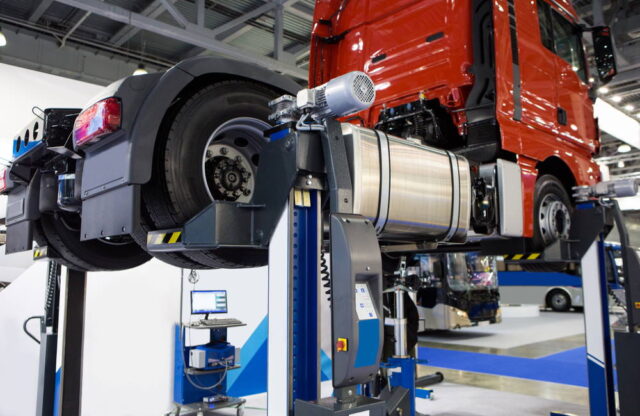
Preparing your vehicle for auto transport is a crucial step to ensure a smooth and hassle-free experience when moving your car from one location to another. Whether you’re relocating, buying a new car from a distant dealership, or sending your car for repairs, taking the necessary precautions can help protect your vehicle and ease your mind throughout the transportation process.
Choosing a Reliable Auto Transport Company

When it comes to auto transport, selecting a reputable and reliable company is paramount. Researching and comparing different auto transport companies will help you make an informed decision and avoid potential pitfalls. Start by checking the company’s credentials and licensing. Ensure that they have the necessary permits and insurance coverage to transport vehicles legally and safely. Reading customer reviews and testimonials is another valuable step in assessing the company’s reputation. Look for feedback regarding their timeliness, professionalism, and care for vehicles during transportation.
Furthermore, it is crucial to obtain multiple auto transport quotes from different companies. However, keep in mind that the lowest price may not always guarantee the best service. Look for a balance between cost and quality. Once you have narrowed down your options, contact the companies directly to discuss any concerns or specific requirements you may have. A reliable auto transport company will be transparent, communicative, and responsive to your inquiries.
Documentation and Insurance

Before handing over your vehicle to an auto transport company, ensure that all the necessary documentation is in order. This includes your vehicle’s registration, proof of insurance, and any other relevant paperwork. Make copies of these documents and keep the originals in a safe place. It is also advisable to take photographs of your car from various angles before transportation to document its condition prior to shipping. These photos can serve as evidence in case any damage occurs during transit.
Moreover, review your insurance coverage to understand what protection you have during auto transport. Contact your insurance provider to confirm whether your policy extends coverage to your car while it is being transported. If not, consider purchasing additional coverage for the duration of the transportation. Understanding your insurance coverage will give you peace of mind, knowing that your vehicle is protected in case of any unforeseen events.
Preparing the Interior
Before your vehicle is loaded onto the transport carrier, it is important to prepare the interior to ensure its safety and to comply with transportation regulations. Start by removing all personal belongings from the car. Loose items can become projectiles during transportation and may cause damage to the interior or other vehicles on the carrier. Take out any valuables, electronic devices, and removable accessories from your car..
Additionally, give your car a thorough cleaning to remove any debris or dirt that could potentially cause scratches or damage during transit. Vacuum the interior, including the trunk, to ensure it is free from loose items or dirt. Cleaning the vehicle not only protects it during transportation but also makes it more presentable upon arrival at its destination.
Finally, ensure that your vehicle’s alarm system is disabled to prevent any accidental triggers during transportation. Provide clear instructions to the auto transport company on how to handle any security systems or immobilizers installed in your vehicle. By taking these steps, you can ensure the interior of your vehicle remains safe and protected throughout the transportation process.
Exterior Inspection and Maintenance

Conducting a thorough exterior inspection of your vehicle is crucial before it is loaded onto the transport carrier. Start by examining the body of the car for any existing damage, such as dents, scratches, or paint chips. Take detailed photographs or videos of the exterior from different angles to document its condition. This documentation will serve as evidence if any damage occurs during transit.
Next, check the windows, mirrors, and lights to ensure they are in good working condition. Replace any broken or cracked windows and lights before transportation. Secure any loose or hanging parts, such as spoilers or antennae, to prevent them from getting damaged or causing damage to other vehicles on the carrier.
Furthermore, inspect the undercarriage of your vehicle for leaks or fluid drips. Address any leaks by repairing or sealing them properly. It is also advisable to top off the fluids, including the engine oil, brake fluid, and coolant, to the recommended levels. This ensures that your vehicle is in optimal condition for transportation and reduces the risk of any mechanical issues during transit.
Fuel and Fluid Levels

Properly managing the fuel and fluid levels of your vehicle is an important aspect of preparing it for auto transport. Taking the necessary steps to address fuel and fluid considerations will help ensure the safety of your vehicle and contribute to a smooth shipping process.
Start by checking the fuel level in your vehicle’s tank. It is recommended to keep the fuel tank between a quarter and half full. This allows for necessary movement during loading and unloading without carrying excessive weight or risking fuel leakage. However, avoid filling the tank to capacity as it adds unnecessary weight to the vehicle and can potentially lead to fuel spillage during shipping.
Next, turn your attention to the various fluid levels in your vehicle. Check the engine oil, transmission fluid, brake fluid, and coolant levels, among others, and ensure they are at the manufacturer’s recommended levels. Topping off the fluids, if necessary, will help maintain the optimal performance and protection of your vehicle’s vital components during transportation.
Conclusion
Preparing your vehicle for auto transport is essential to ensure that it arrives safely and without any damage. By following the tips above and adhering to the checklist, you can guarantee that your vehicle will be shipped professionally and securely. Don’t forget to clean your car inside and out before handing it over so that you don’t have to worry about any dirt or debris getting transferred during its journey. With these considerations in mind, you can rest assured knowing that your vehicle is in good hands when it comes time for transport!









